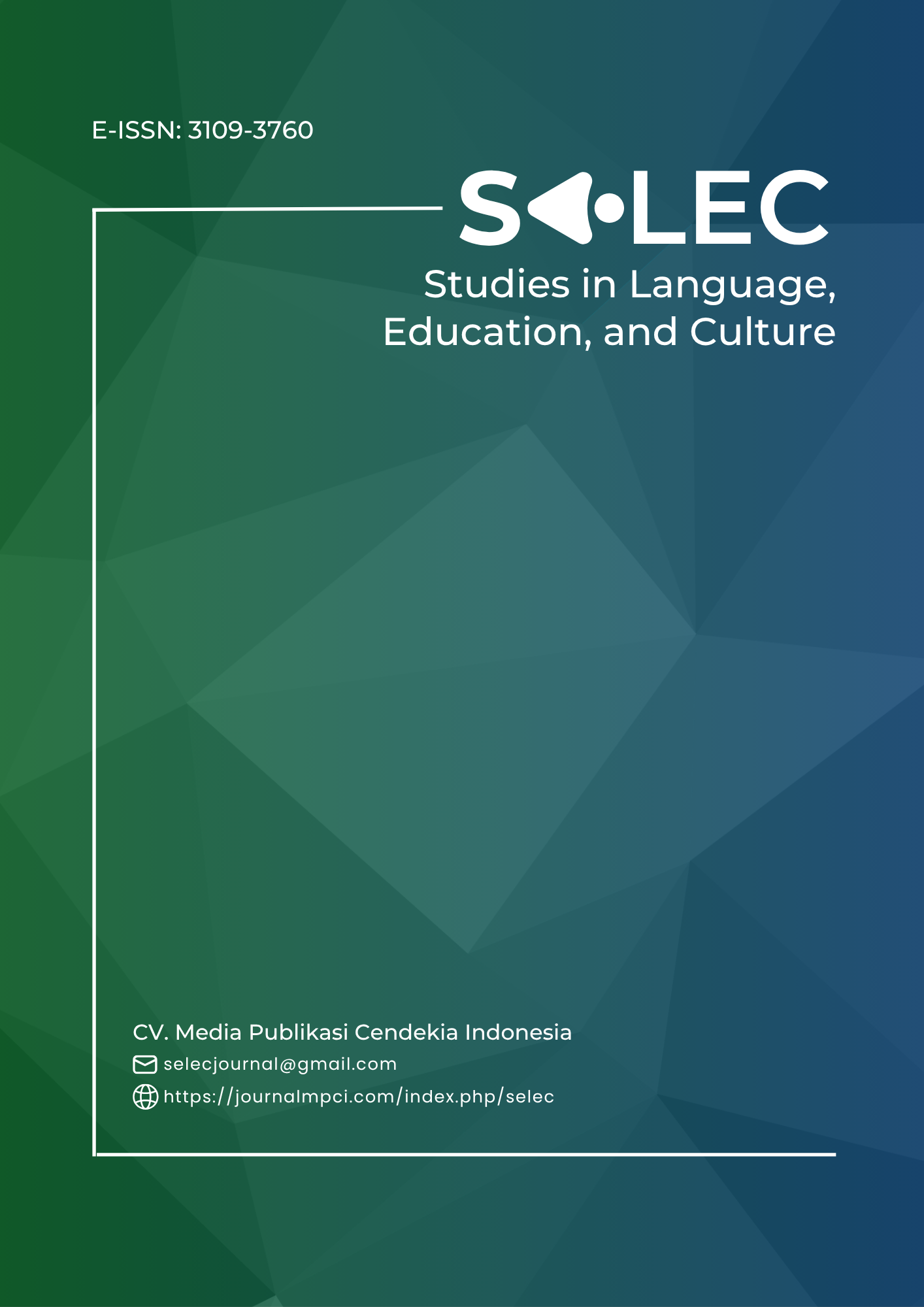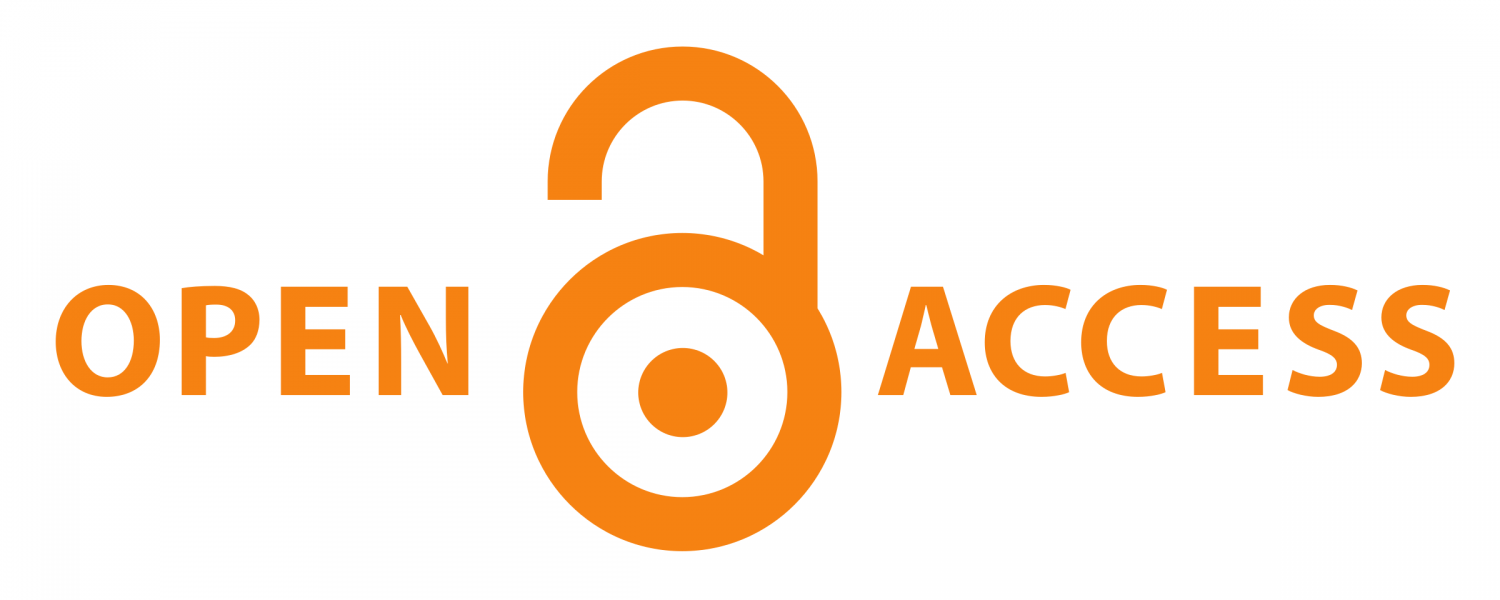Exploring the Influence of Technology on EFL Learning: A Comparative Analysis of Introverted and Extroverted Students
DOI:
https://doi.org/10.56303/selec.v1i1.453Keywords:
EFL learning, Extroverted students, Introverted students, Learning videos, TechnologyAbstract
This study examines the impact of technology on English as a Foreign Language (EFL) learning, specifically focusing on the utilization of technology by introverted and extroverted students. The objective is to provide a comprehensive overview of how technology is employed as a learning tool and to identify potential disparities between the two student groups. A descriptive research design was adopted, and qualitative analysis was used for data interpretation. The participants included introverted students and extroverted students, who were interviewed online using WhatsApp media. The findings indicate that both introverted and extroverted students employ technology, particularly learning videos, to enhance their language skills. However, introverted students tend to prefer using technology alone compared to their extroverted counterparts. These results offer insights into the differences between introverted and extroverted learners in utilizing technology for EFL learning. The study contributes to the existing literature on individual learner differences, with a specific focus on the use of technology by introverted and extroverted students in the EFL context.
Downloads
References
Afrilian, Aries. (2017). Pemanfaatan Teknologi Informasi Sebagai Sumber Belajar Siswa. Universitas Kristen Satya Wacana. Salatiga.
Ahmadi, M. R. (2018). The Use of Technology in English Language Learning: A Review. International Journal of Research in English Education
Bull, S., & Ma, Y. (2001). Raising learner awareness of language learning strategies in situations of limited recourses. Interactive Learning Environments.
Buss, D. M., & Greiling, H. (1999). Adaptive individual differences. Journal of Personality
Bonk, Curtis J. (2009). The world is open: How web technology is revolutionizing education. San Francisco: Jossey-Bass.
Blake, R. J. (2011). Current trends in online language learning. Annual Review of Applied Linguistics.
Brackin, T. (2000). College Students' Use of Electronic Communication Technologies: Introverts versus Extraverts. ERIC
Carol Griffiths, A. S. (2020). Individual Differences in Language Learning: A Complex Systems Theory Perspective. Gewerbestrasse, Switzerland: Palgrave Macmillan Cham.
Creswell, & John. W. (2014). Research Design, Qualitative, Quantitative, and Mixed Methods Approaches (Fourth Edition). United State of America: Sage Publications.
Cook, V. (2001). Second language learning and language teaching (3rd editions). New York: Oxford University Press, Inc.
Davis, Fred D., (1989), “Measurement Scales for Perceived Usefulness and Perceived Ease of Use”, http://wings.buffalo.edu/mgmt/courses/mgtsand/success/davis.html, (retrieved 28 November 2022)
Dewaele, J., & A. Furnham (1999). Extraversion: The unloved variable in applied linguistic research. Language Learning.
Ehrman, M.E. (1996). Understanding Second Language Learning Difficulties. Thousand Oaks, California: SAGE Publications
Ellis, R. (1985). Understanding Second Language Acquisition. Oxford: Oxford University Press.
Ellis, R. (2008). The Study of Second Language Acquisition. Oxford, UK: Oxford University Press.
Eysenck, H. J. (1964). Principles and methods of personality description, classification, and diagnosis. British Journal of Psychology.
Johnson, K. (2008). An Introduction to Foreign Language Learning and Teaching. New York, USA: Routledge.
Kern, R. (2006). Perspectives on technology in learning and teaching languages. TESOL Quarterly.
Kusmaryani, W., Musthafa, B., and Purnawarman, P. (2019). The influence of mobile applications on students' speaking skill and critical thinking in English language learning. Journal of Physics: Conference Series
Larsen-Freeman, D., & M. H. Long (2000). An introduction to second language acquisition research. London: Longman.
McDonough, S. H. (1986). Psychology in foreign language teaching. London: George Allen & Unwin.
Melvina, M., Lengkanawati, N. S., & Wirza, Y. (2020). The Use of Technology to Promote Learner Autonomy in Teaching English. Atlantis Press SARL
Mohammed, I. J. (2020). Learner Differences in Second Language Acquisition. Tikrit, Iraq: Journal of Tikrit University for Humanities.
Roberts, L., & Meyer, A. S. (2012). Individual differences in second language learning: Introduction. Language Learning.
Sawang, S., O'Connor, P., and Ali, M. (2017). Using Technology to Enhance Students’ Engagement in a Large Classroom. Journal of Learning Design
Skehan, P. (1989). Individual differences in second language learning. London: Edward Arnold.
Snape. D., & Spencer. L. (2003). The foundations of qualitative research, in Ritchie J, Lewis J (eds) Qualitative Research Practice: a Guide for Social Science Researchers and Students. SAGE Publications Ltd, London.
Sugiyono. (2010). Memahami Penelitian Kualitatif. Bandung: Alfabeta.
Sugiyono. (2013). Metode Penelitian Pendidikan. Bandung: Alfabeta.
Son, J.-B. (2018). Technology in English as a Foreign Language (EFL) teaching. The TESOL Encyclopedia of English Language Teaching. vol. 3, pp. 1–7
Son, J.-B. (2015, November). Computer-assisted language learning: A reality check. Plenary speech at the Globalization and Localization in Computer-Assisted Language Learning (GLoCALL) 2015 Conference, Pai Chai University, Daejeon, Korea.
Spolsky, Bernard. (1989). Conditions for Second Language Learning. Oxford: Oxford University Press.
Swain, M. (1985). Communicative competence: Some roles of comprehensible input and comprehensible output in its development. In S. M. Gass, & C. G. Madden (eds.), Input in second language acquisition. Rowley, MA: Newbury House.
Taylor. SJ., & Bogdan. R. (1984). Introduction to Qualitative Research Methods. New York: Wiley.
Pradnyana, G. T., Santosa, M. H., & Hadisaputra, I. N. P. (2022). Teachers and Young Learners’ Needs in English Teaching and Learning Environment. The Art of Teaching English as a Foreign Language
Williams, C. (2007). Research Methods. Journal of Business & Economic Research.
Wang, H., & Chen, C. W. (2019). Learning English from YouTubers: English L2 learners’ self-regulated language learning on YouTube. Innovation in Language Learning and Teaching
Viet, H. Q. (2021). The Differences of Individual Learners in Second Language Acquisition. Texas, The United States: Asia Association of Computer Assisted Language Learning.
Downloads
Published
How to Cite
Issue
Section
License
Copyright (c) 2025 Syukron Fajriansyah

This work is licensed under a Creative Commons Attribution-ShareAlike 4.0 International License.







